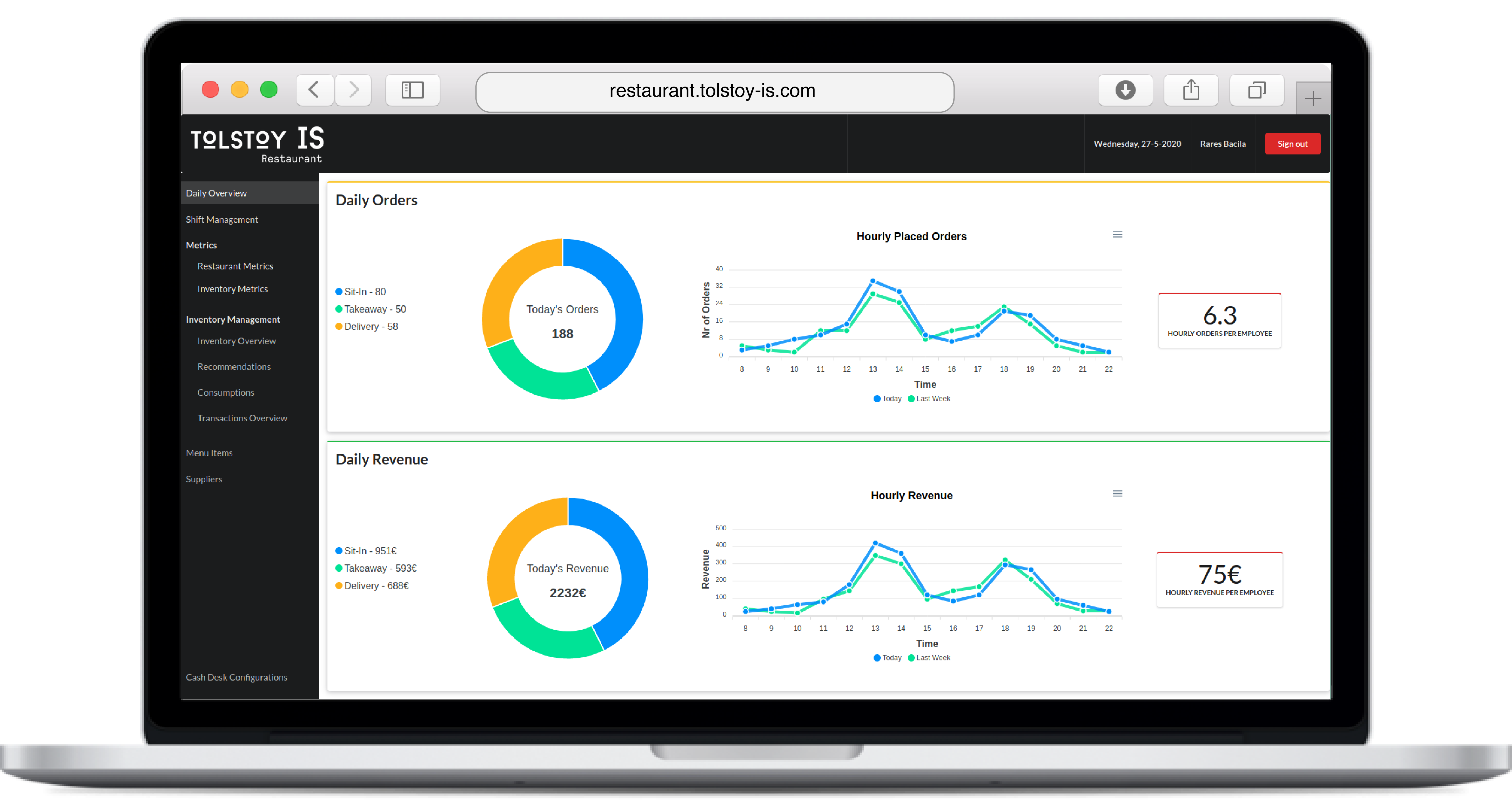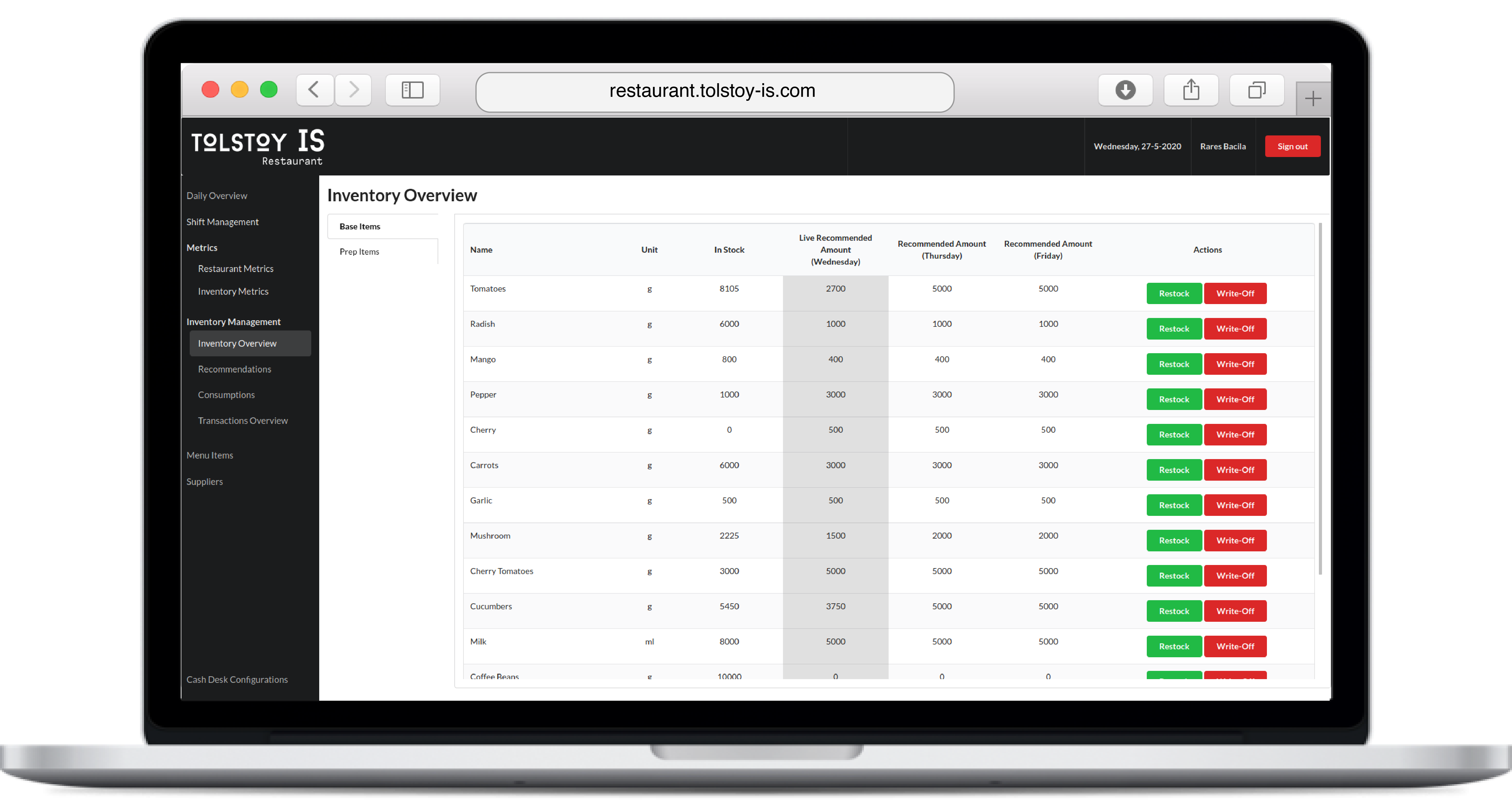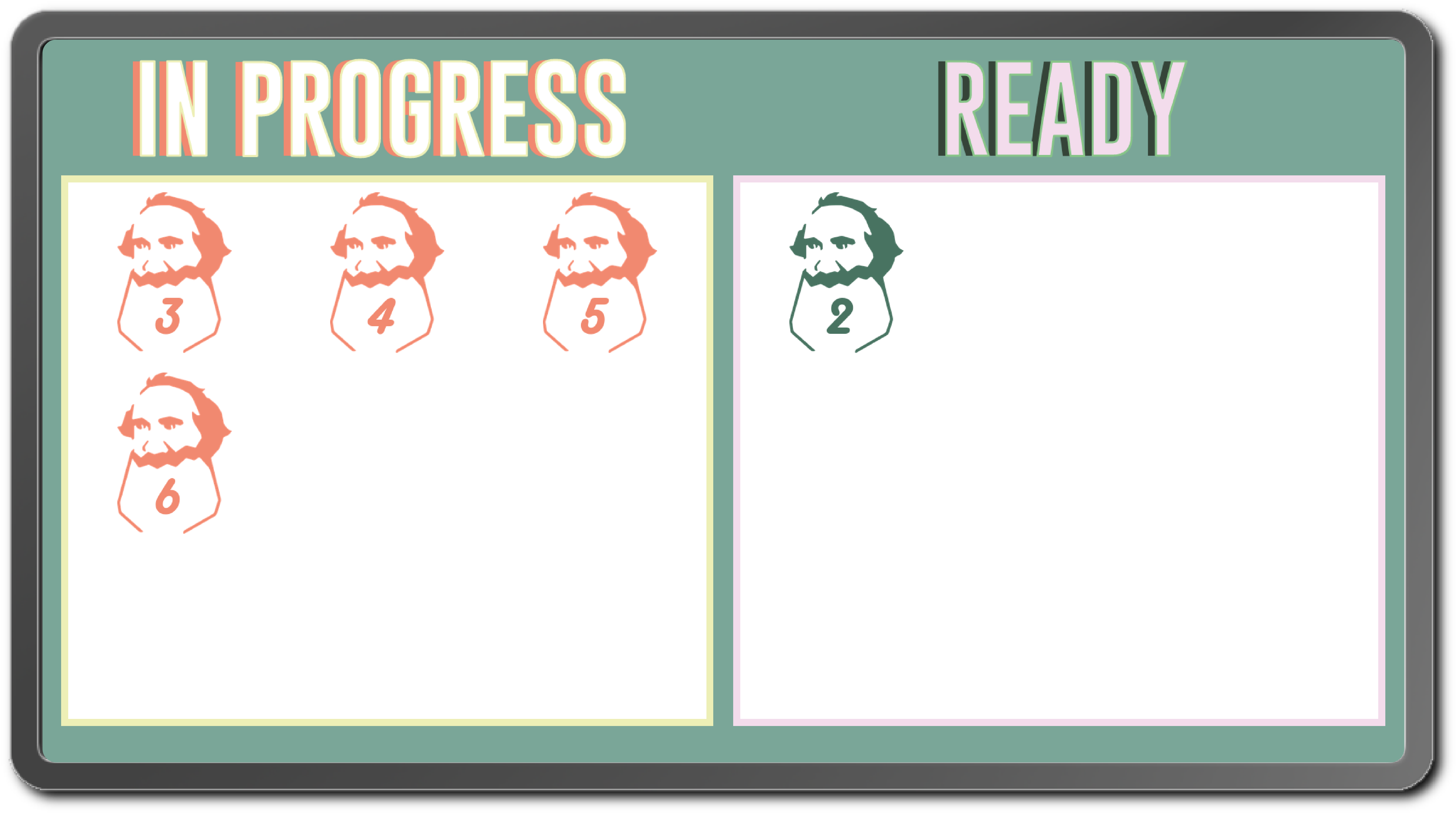We envision Tolstoy as an innovative software-driven restaurant company. Why software? We have been asked this question many times since the inception of our project. “Why don’t you guys just use the restaurant management solutions available on the market?” “Why are you reinventing the wheel?”
Here is our answer.
First of all, it’s about transparency. We want to build a transparent franchising business. One of the biggest challenges faced by franchising businesses is a lack of consistency and control. This is due to the fact that each franchisee is a different company, often with somewhat different ideas about what to do and how to act. Our Information System (TolstoyIS) provides insight into what is happening live throughout the entire franchising network – be it in the area of procurement or the marketing campaigns. All data is recorded, stored and analyzed – from the revenues coming in – to the amount of tomatoes in the individual stock of each franchisee. This will allow us to analyze all business decisions taken inside of the franchising network and create predictive models for better decision making. With third party systems this would not be possible due to integration issues and the cumbersome nature of working with different suppliers.
Secondly, it’s about convenience and increased sales. Franchising is a very old model, which has been traditionally based on trust between franchisor and franchisee. We want to keep that trust component, but we also want to digitize these relationships. For Tolstoy franchisees, management of their individual restaurants and communication with the franchisor will be facilitated by TolstoyIS. Each franchisee will have a plug-and-play dashboard, from which he or she can conveniently manage the business, consult the franchisor and take right decisions. Each franchisee will be able to compare their performance with other franchisees and use the common knowledge and best-practices database. This in turn will facilitate a feeling of healthy performance competition between the franchisees and will increase sales.
Finally, it’s about costs and operational efficiency. One of our inspirations for Tolstoy was DoDo Pizza, a digital-first pizza franchising from Russia. They demonstrated that through creating their own information system for restaurant management, significant improvements in operational efficiency and a reduction in costs were possible. Compared to other chains, the savings and operational improvements were especially visible in the areas of inventory management and employee management. We want to learn from this success story, and take it even further.
Now let’s get a bit technical!
Web-based platform
We chose to build our system as a a web-based software. Why? Well, the answer is quite simple.
The set-up requires minimal time and effort because there is no installation process needed. The restaurant manager only needs to log in on the devices and the software is ready to be used.
It’s not a device specific application and it’s available on every device since it runs in a browser. This means that it can be run on everything, from a laptop, to a tablet or a smartphone. It also translates to the fact that when we will need more computing power, we don’t have to ask the franchisees to upgrade their IT infrastructure, which can be expensive. Instead, we will upgrade only the main server to the benefit of everyone.
It’s easy to deliver fast updates to all the franchisees at once. Since the application is updated only once through the main server and automatically refreshed on every device in our company, franchisees will experience significant time savings. Additionally, this system will allow us to incorporate feedback from our franchisees through our updates to improve our software, which will likewise improve the processes in Tolstoy restaurants.
Let’s take a look at the architecture of the system.

The Backend is the core of our software. This is where all the calculations and heavy lifting takes place. Here we can differentiate between two different layers – database layer and business layer – and the API Endpoints.
- a. Database Layer: For the base layer of our backend, we chose the open-source PostgreSQL, for it’s richer functionality compared to similar solutions and easier integrations with Docker and Flask (Python framework). We also chose to create a traditional database instead of a multitenancy architecture, so that our dataset can easily grow in one place.
- b. Business Layer: For the computational layer of our software, we chose Python as our programming language and Flask as the main Python framework because it’s lightweight and very flexible. It’s ideal for prototyping and very modular which helped a lot during the initial software architecture design. It’s also very powerful and will make the process of integrating features more easily. One of those features will be Deep Learning to maintain each restaurant’s inventory and daily orders count forecasting, which will help the franchisees manage the personnel inside the kitchen as well as the procurement process.
- c. API Endpoints: The connection between the business layer and our different user interfaces is a simple, yet powerful REST API. Why do I say powerful? Because this lets us integrate a suit of very different applications and makes our opportunities infinite.
The Frontend is the trusted companion of the franchisees. The managers will be able to run the restaurant with the help of the Restaurant Management UI. The Kitchen Process UI (User Interface) supports the kitchen personnel through the whole preparation process of a dish, starting with dish assembly and finishing with serving the dish.
a. Restaurant Management UI
Written in ReactJS with the widespread NextJS framework, Restaurant Management UI provides real time metrics of the restaurant, helping managers to make timely decisions in order to increase revenue / decrease operational costs.
A first important feature is the Restaurant Dashboard which shows a vital information for the manager:

- Amount of current daily placed orders and current daily total revenue divided into three main categories: how many orders were placed from inside the restaurant; how many on the takeaway window; and, how many came from our delivery platform.
- Graph that compares hourly incoming orders and hourly revenue from the current day with the exact same day, one week prior. This helps the manager anticipate the customer flow and appropriately assign personnel to each kitchen station.
- Hourly orders and revenue generated per kitchen employee which helps the manager understand the current staff workloads.
The Inventory Management feature will allow franchisees Restock and Write-Off ingredients and calculate real-time ingredient and inventory items consumption based on the currently served orders. Franchisees will also be able to check real-time dish production costs and gross profit per dish and per restaurant.

With the help of Shift Management, managers can check in and check out employees, assign lunch breaks and place a direct staff order for the employee’s chosen lunch menu.
b. Kitchen Process UI
Developed in NextJS with Pusher.io integration, this process will send status change notifications for dishes from one station to the next. This represents the heart of the kitchen and will support and guide the kitchen personnel during the preparation process of each dish.

After an order is placed, the dishes that need preparation will appear on the Assembly Station tablet and on the Order Display in the dining area for the in-restaurant placed orders or on the Takeaway Order Display for the orders placed at the takeaway window, accompanied by a sound. The preparation begins when the employee clicks on a dish. The dish changes status and appears as non-active on the Backing Station or Packaging Station, depending on the predefined route of the dish through the kitchen.

After packaging, the dish becomes green on the Counter Station, which means that the dish is ready. When all the dishes inside an order become green, this indicates that the whole order is ready to be served. Then employee clicks on the order and the Order Display announces to the customer that the order is ready for pick-up.

An important feature is that the systems log every action taken in the Kitchen UI and Restaurant Management UI in order to help us constantly update and improve the system and the kitchen flow.
c. Corporate Management UI
Developed with NextJS, this process allows the us to add, edit or remove ingredients, or alter the menu or recipes for all the franchisees at once. This ensures that all the franchisees always have the latest menu and ingredients in the system, without them having to input all the newest data on their restaurant accounts, or checking whether their inventory is up to date. Instead, they are able to solely focus on growing their customer base.
Another feature is the Marketing Campaigns generator, which will allow us deploy new marketing campaigns to all restaurants at once.
d. Public website
The website on which you are now reading this article might not seem out of the ordinary, but it is a very powerful tool with lots of scale-up possibilities. Written in GatsbyJS, it is fully integrated with our Information System (TolstoyIS). Because we believe in transparency, not only towards our franchisees, but towards everyone, we will soon add a Statistics Overview to our website.
What does this mean? This means that everyone will be able to see our franchise overall revenue metrics and revenue metrics for each restaurant individually, in Real-Time.
e. Delivery Platform
Another main, in-development feature for our system is the proprietary Delivery Platform. Wait, why are we not using the currently existing platforms? The answer is due to the quality of currently available products. We want to be able to control the quality and process from the start - from placing an order to serving the order to the customer. This also means that we are taking more ownership of the delivery process.
Some concluding thoughts
We don’t want to build a restaurant company. We want to build a technology company. Tolstoy is focused around two main technologies: 1) food technology, meaning creating an innovative plant-based menu for our customers; and, 2) software, where we are creating the best-in-class for our customers and franchisees to revolutionize the franchise market.
Technology is in our DNA and that is why we will work hard to develop, grow and deploy continuous updates to TolstoyIS – and I will regularly update you on the process, so stay tuned 😉